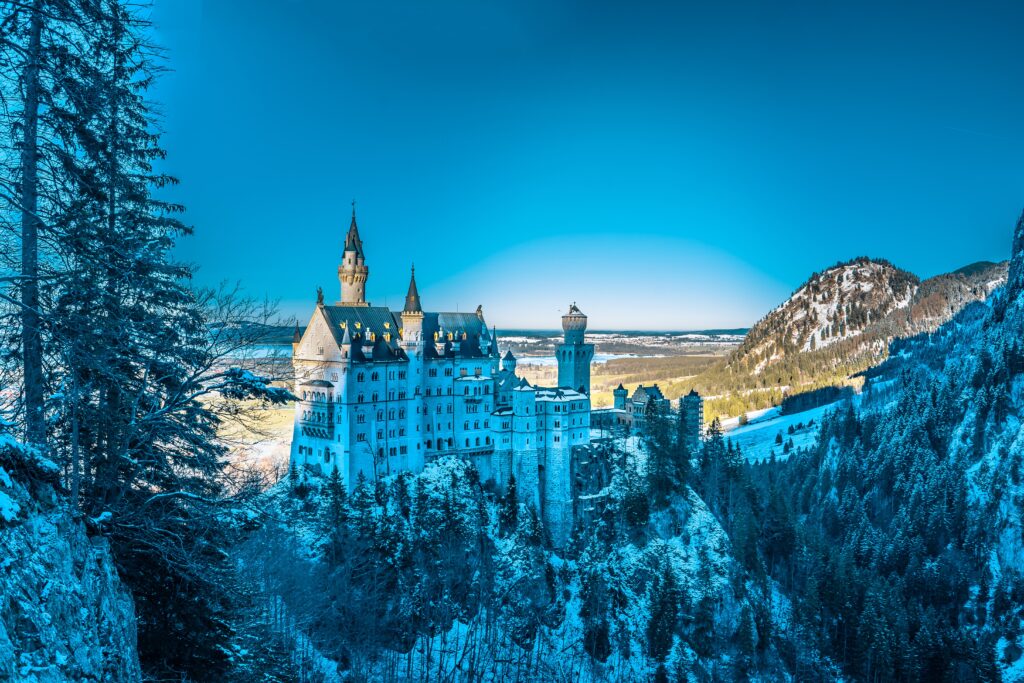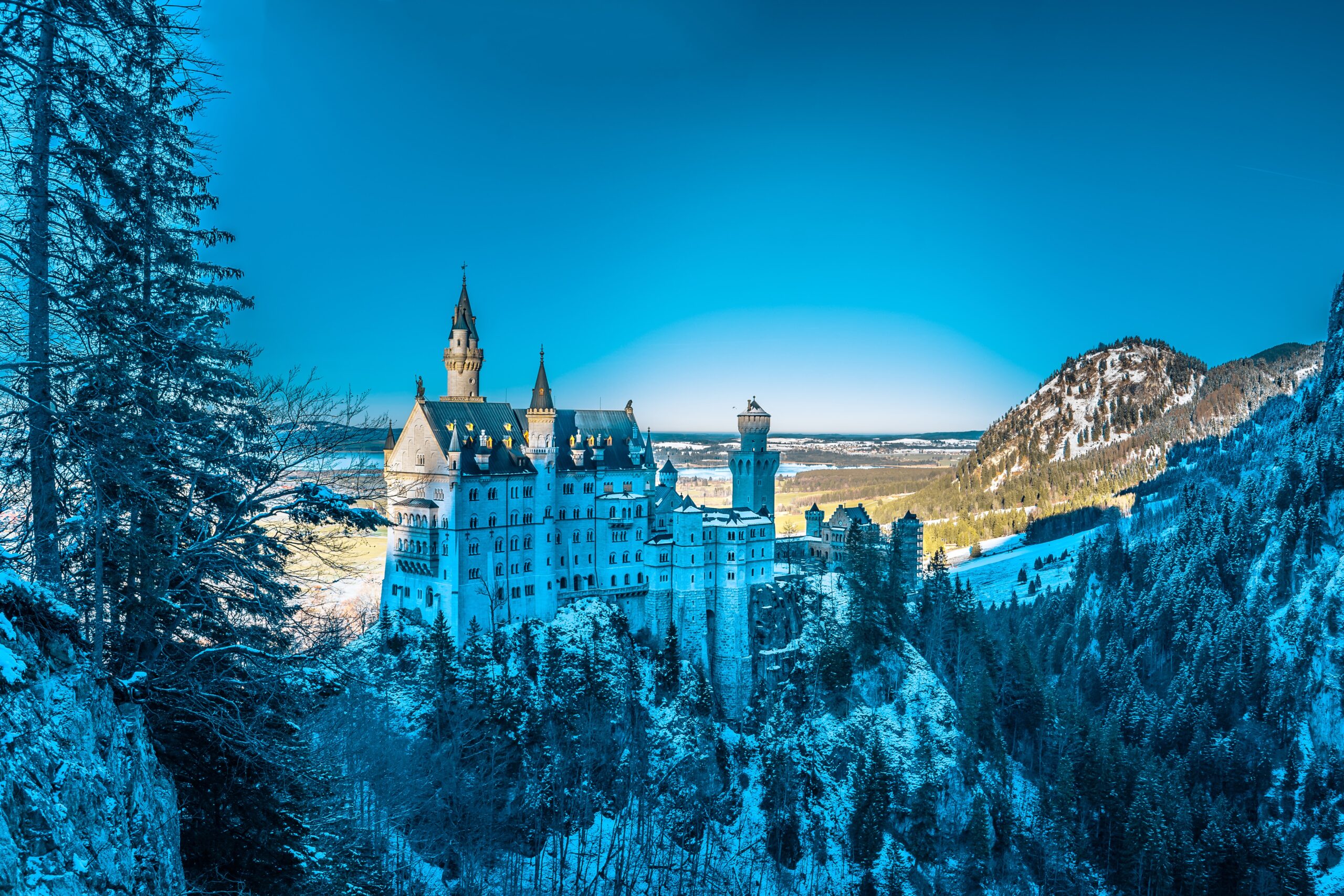The article “Contradictions in the Lives of Jews in East Germany” explores the complex and often overlooked history of Jewish life in the German Democratic Republic (G.D.R.) during the Cold War era. The exhibition at Berlin’s Jewish Museum, titled “Another Country: Jewish in the G.D.R.,” presents personal narratives and objects that shed light on the Jewish experience in an authoritarian, officially atheist communist state. The exhibition highlights the contradictions faced by Jews in East Germany, such as the stigma associated with wearing religious symbols and the state’s ambivalence towards nonsecular groups. The curators aim to present a mosaic of perspectives rather than a singular narrative, allowing visitors to discover their own understanding of this little-known history.
Background of Jewish Life in East Germany

Historical overview of Jewish population in Germany
The exhibition “Another Country: Jewish in the G.D.R.” at Berlin’s Jewish Museum sheds light on the often-overlooked history of Jewish life in East Germany. To understand the Jewish experience in East Germany, it is important to have a historical overview of the Jewish population in Germany as a whole. Before Adolf Hitler’s rise to power in 1933, there were over half a million Jews in Germany. However, during the first six years of the antisemitic Nazi regime, half of them fled to other countries, and approximately 170,000 were murdered in the Holocaust. By the end of World War II, only about 15,000 Jews remained in Germany.
Division of Germany into occupied zones
After the defeat of the Third Reich in 1945, Germany was divided into four occupied zones. The British, French, and American sectors became the Federal Republic of Germany, while the Soviet zone became the German Democratic Republic (G.D.R.). While few Jews wanted to live in Germany after the catastrophic events of the 1930s and ’40s, some were attracted to the utopian vision of rebuilding a better society in the East. Denazification proceeded more quickly in the Soviet zone than in the West, and the G.D.R. presented itself as a “just, antifascist society” where being human was the most important value.
Attraction of East Germany for some Jews
Despite the history of persecution and the knowledge that Germany was the “land of the perpetrators,” some Jews were drawn to East Germany after World War II. The G.D.R. represented a fresh start and an opportunity to contribute to building a new society based on socialist principles. These Jews believed in the utopian vision presented by the G.D.R. and hoped to create a better future for themselves and their fellow citizens. The exhibition highlights one family’s story of optimism and hope through a traveling trunk owned by Josef and Lizzi Zimmering, who returned to the Soviet occupied zone in 1946 after surviving the Holocaust in exile.
Stigmatization of Jewish Symbols
The absence of Jewish religious symbols
During the communist era in East Germany, religious symbols, including those of the Jewish faith, were stigmatized. The officially atheist state frowned upon any display of religious affiliation and discouraged the wearing of religious symbols. As a result, Jewish religious symbols, such as the Star of David, were not easily accessible or openly displayed.
Melt down of silver to create a Star of David
In the absence of ready-made Jewish religious symbols, individuals like Cathy Gelbin’s mother took matters into their own hands. Gelbin, a participant in the exhibition, wanted a pendant necklace with a Star of David to celebrate her secular coming-of-age ceremony. However, finding such a symbol in East Berlin proved difficult. Gelbin’s mother approached a local jeweler and asked him to melt down silver to create a Star of David pendant. Unfortunately, the jeweler refused due to the prevailing stigmatization of religious symbols.
Wearing religious symbols as opposition to East German ideology
Despite the stigmatization, wearing religious symbols became a form of opposition to East German ideology. Individuals like Gelbin, who remained committed to Jewish culture and religion, would sometimes defy the norms and wear their religious symbols openly. However, this act often attracted attention and suspicion. Wearing a Star of David or other religious symbols in East Germany was viewed as an act of opposition or diversion from the state ideology.
Exhibition at Berlin’s Jewish Museum

Overview of the exhibition ‘Another Country: Jewish in the G.D.R.’
The exhibition “Another Country: Jewish in the G.D.R.” at Berlin’s Jewish Museum provides a comprehensive exploration of Jewish life in East Germany. The exhibition showcases nearly 20 personal narratives, including that of Cathy Gelbin, along with various objects like a silver torah shield, a handmade flag, a Seder plate, and a prayer shawl. These personal stories and objects paint a vivid picture of the Jewish experience in the G.D.R., highlighting the complexities and contradictions faced by the Jewish community during the Cold War era.
Multiple personal narratives and contrasting experiences
Rather than providing a singular narrative, the exhibition presents multiple personal narratives that offer contrasting experiences of Jewish life in East Germany. By featuring a range of stories, the exhibition allows visitors to gain a deeper understanding of the diverse experiences within the Jewish community. These narratives showcase the challenges, aspirations, and resilience of individuals who navigated life as Jews in an authoritarian and officially atheist communist state.
Objects featured in the exhibition to illuminate Jewish life
In addition to personal narratives, the exhibition utilizes various objects to illuminate Jewish life in East Germany. These objects serve as tangible representations of Jewish culture, tradition, and identity. From a silver torah shield used in religious ceremonies to a handmade flag symbolizing Jewish identity, each object tells a story and contributes to the overall narrative of the exhibition. By showcasing these objects, the exhibition aims to foster a deeper appreciation and understanding of Jewish life in the G.D.R.
Jewish Life in East Germany after World War II
Small population of Jews in East Germany
After World War II, the Jewish population in East Germany was relatively small. Most Jews in East Germany were committed communists, comprising a few thousand individuals. Despite their small numbers, these Jews formed distinct communities within East Germany and sought to revive Jewish culture.
Distinct Jewish communities within East Germany
Within the small population of Jewish individuals in East Germany, there were seven or eight distinct Jewish communities. Each community had its own unique approach to reviving Jewish culture and fostering a sense of Jewish identity. These communities, although relatively small, played an important role in preserving and passing down Jewish traditions within the confines of an authoritarian state.
Antisemitic persecution during the Slansky Trial
In 1952, a show trial known as the Slansky Trial took place in Prague, Czechoslovakia, targeting Jews throughout the Eastern bloc. In East Germany, Jews faced hostility and persecution from broad segments of the population due to Soviet Union propaganda. Accused of being part of an “imperialist spy ring” and forced to confess to espionage and condemn Zionism, Jews endured a period of intensified antisemitic persecution during this time.
Jewish Identity in East Germany

Discouragement of national and ethnic Jewish identity
While Jewish religious observance was allowed in East Germany, the state discouraged the development of a broader sense of national and ethnic Jewish identity. The emphasis on socialism and the rejection of individual religions contributed to the discouragement of Jewish identity beyond religious practices. Jews in East Germany were expected to prioritize their identity as citizens of the G.D.R. over their Jewish heritage.
Limited contact with the state of Israel
In line with the socialist ideology, East Germany limited contact with the state of Israel. The G.D.R. forged closer ties with Arab nations and supported the Palestinian cause. This stance further contributed to the discouragement of Jewish identity beyond religious affiliations. Jewish communities within East Germany had limited access to information and cultural exchanges with Israel.
Jewish communities existing in a state of hibernation
Jewish communities within East Germany existed for decades in a state of hibernation. While Jewish religious observance was tolerated, the broader Jewish cultural and communal life faced numerous challenges. The communities struggled to maintain and pass down Jewish traditions in the absence of a vibrant Jewish cultural landscape. Jewish identity became intertwined with the complexities and contradictions of life in the G.D.R.
Demographic Collapse and Revival of Jewish Community
Demographic collapse of Jewish communities in late 1980s
By the late 1980s, the eight Jewish communities in East Germany were on the verge of demographic collapse. The Jewish population dwindled to only about 400 members. The challenges of preserving Jewish traditions, coupled with the political and social climate of the G.D.R., resulted in a decline in the Jewish community’s numbers and vitality.
Fall of the Berlin Wall and collapse of the G.D.R.
The fall of the Berlin Wall in 1989 marked a turning point for both Germany and the Jewish community in East Germany. The G.D.R. began to collapse, allowing for greater freedom and opportunities for its citizens. The reunification of Germany presented new possibilities and challenges for the Jewish community, as the country emerged from decades of division and suppression.
Tens of thousands of Jews from the Soviet Union seeking asylum
In the months leading up to the collapse of the G.D.R., tens of thousands of Jews from the Soviet Union sought asylum in East Germany. As another communist state on the brink of collapse, the G.D.R. became a temporary refuge for Jews fleeing persecution and seeking a better life. This influx of Soviet Jews revitalized the Jewish community in East Germany, leading to a resurgence of Jewish life and culture.
Personal Experience of Cathy Gelbin
Desire for a Star of David pendant necklace
Cathy Gelbin, a participant in the exhibition, shared her personal experience of desiring a Star of David pendant necklace during her youth in East Germany. As a symbol of her Jewish faith, Gelbin wanted the necklace to celebrate her secular coming-of-age ceremony. However, due to the stigmatization of religious symbols in East Germany, finding such a necklace proved to be a challenge.
Obtaining the necklace from friends in West Berlin
Despite the difficulties, Gelbin eventually obtained her Star of David pendant necklace through friends from West Berlin. These friends brought her the necklace, allowing Gelbin to openly display her Jewish identity in a society where religious symbols were discouraged. The necklace became a cherished personal item and a symbol of Gelbin’s commitment to Jewish culture and religion.
Impressions and reactions of wearing the necklace
Wearing the Star of David pendant necklace in East Germany elicited varied impressions and reactions from those around Gelbin. Some people were impressed or intrigued upon seeing the necklace, while others responded with hostility. Gelbin took the time to explain the significance of the necklace to those who asked, prompting reflection and contemplation. Wearing the necklace became an act of defiance and a way to challenge the prevailing norms and ideologies of the G.D.R.
Conclusion and Impact of the Exhibition
Impact of the exhibition on understanding Jewish life in East Germany
The exhibition “Another Country: Jewish in the G.D.R.” at Berlin’s Jewish Museum offers a comprehensive and nuanced understanding of Jewish life in East Germany. By showcasing personal narratives, objects, and contrasting experiences, the exhibition sheds light on the complexities and contradictions faced by the Jewish community during the Cold War era. It challenges preconceived notions and fosters a deeper appreciation for the diverse experiences of Jews in East Germany.
Reflection on the contradictions and complexities of Jewish experiences
The exhibition prompts reflection on the contradictions and complexities of Jewish experiences in East Germany. It highlights the tensions between individual identity and state ideology, as well as the challenges of preserving Jewish traditions in an atheist and authoritarian society. By examining personal narratives and objects, visitors are encouraged to grapple with the nuances and layers of Jewish life in the G.D.R., ultimately gaining a greater appreciation for the resilience and determination of the Jewish community.
In conclusion, the exhibition “Another Country: Jewish in the G.D.R.” offers a comprehensive exploration of Jewish life in East Germany. Through personal narratives, objects, and contrasting experiences, the exhibition provides invaluable insights into the challenges, aspirations, and resilience of Jews in an authoritarian and officially atheist communist state. It serves as a reminder of the diverse experiences within the Jewish community and prompts reflection on the complexities and contradictions of Jewish identity and life in East Germany.

